The
Lake Titicaca Steam-ships | ||
An
extraordinary fleet - then and now | ||
 | ||
Tony Morrison remembers "I reckon to have been very fortunate to have crossed Lake Titicaca seven times on the original steamers travelling between the Peruvian port of Puno and the Bolivian port of Guaqui. In the 1960's and 70's it was a very convenient route as the road around the lake was appalling. Marion first crossed the lake in 1967. Apart from one voyage in high wind with horizontal sleet and the lake whipped to a frenzy they were magical journeys. I crossed several times on the SS Inca then on the SS Coya. My last journey by lake steamer was on the SS Ollanta in 1980 when the older ships were in disrepair. But sadly I have never made a trip in the Yavari or Yapura" | ||
| Lake Titicaca The highest lake in the world navigated by commercial ships is at 3811m in the Andes mountains of Peru and Bolivia. The lake fills a deep hollow in the mountains with a chain of white capped peaks on the eastern side, some over 6000m high. The western side is not so spectacacular. Lake Titicaca has two parts, the large northern lake that includes the Peruvian port of Puno and a smaller, Bolivian lake with Guaqui port on the southern shore. The two lakes are divided by a narrow strait,Tiquina only 800m wide close to where the picture below was taken. At its maximum Titicaca is 190kms long and 80kms wide. The regular lake steam-ship route was between the two ports | ||
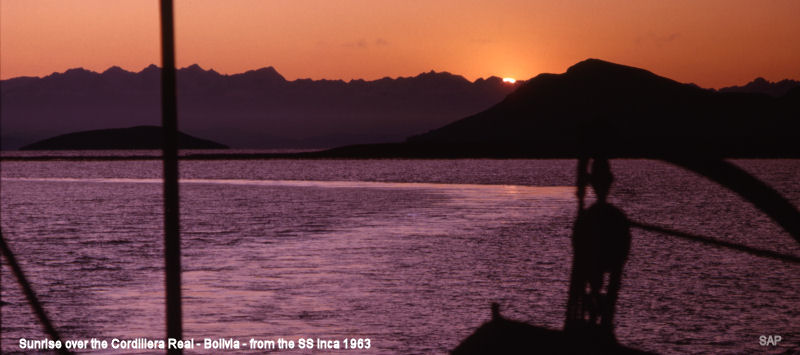 | ||
| The first large iron ships to sail on the lake were built in London England in the early 1860s. They were built beside the river Thames and then taken apart so they could be shipped as kits to Peru.The sections had to be small enough to be carried on mule or on the backs of teams of local indigenous Aymara or Quechua porters. A small group of British engineers complete with plans accompanied the parts. Inevitibly there were delays but finally the ships were re-built on the shore near Puno and the Yavari was launched on December 25th, 1870. The Yapura was launched less than 15 months later on March 18th 1872. Both ships were fitted with small steam-engines and for some reason it was found better to use the dung of the native, domesticated llama as fuel. The Yavari's hull was extended by 15.24m in 1895. The steam engine was removed and replaced by a diesel motor in 1914. In profile the Yapura is much the same today as when it was built though the steam-engine has been replaced | ||
| The Twins. Yavari [behind] built 1861 launched 1870 and Yapura built 1861 and launched 1872 | Pictures by Tony and Marion Morrison taken in 1967 | |
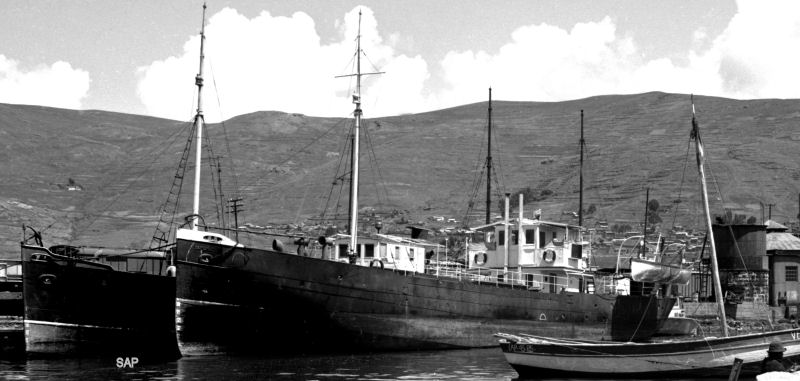 | ||
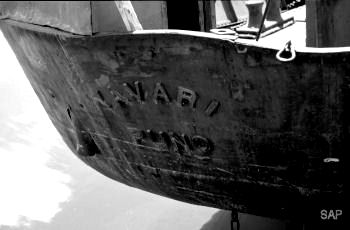 | 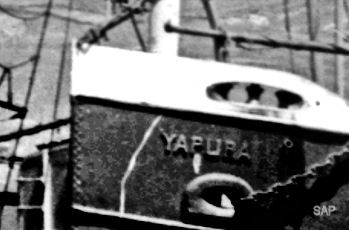 | |
| On the stern of the Yavari 1967 | On
the bow of the Yapura 1967 | |
|
The railway connection While the Yavari and Yapura worked between isolated lakeside communities the business dream was to connect the Pacific coast and major towns and cites by railway. The Peruvian Government connected the Pacific port of Mollendo with Arequipa, the country's second city and from there a line led through mountain heights to Juliaca, a junction north of Lake Titicaca. From Juliaca a line ran north to Cuzco the old Inca capital and another line led south to Puno. The first train arrived in Puno at the beginning of 1874 and the line was completed a few years later. Once the track reached Puno the way was open to bring in more and larger ships to expand the fleet. The Guaqui - La Paz [the Bolivian capital] or Ferrocarril Guaqui - La Paz was completed between 1901 and 1903. For the Bolivians it gave a useful connection to Peru. A line was also constructed between La Paz and the Argentinian capital, Buenos Aires. So by the beginning of the 20th century the railways and the Lake steamers could offer a route connecting the Atlantic with the Pacific. All the following three ships were built, their parts numbered and then dismantled [knocked-down] for transportation to Peru. They were carried by from the Pacific coast by train to Puno where they were re-built and launched. |
| SS Coya launched 1893 | |
| |
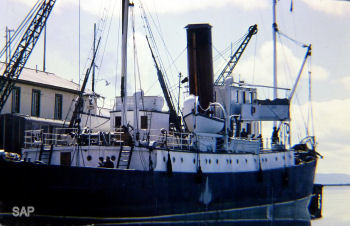 | 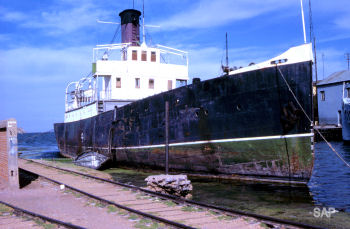 |
| Active in 1963 | Active in 1967 |
 |  |
| Derelict in Puno harbour 1977 | Left high and dry as the lake level receded 1992 - a very high water level in 1986 had cast the ship over the normal shore line |
| S S Inca launched early 1905 | |
| |
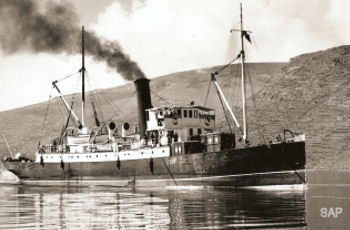 | 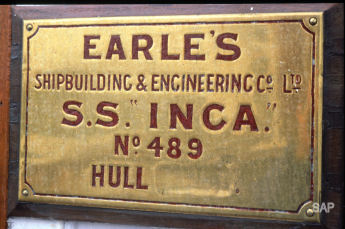 |
| In Puno Bay 1967 | The date was hammered out see after Hull sometime prior to this photo in 1977 |
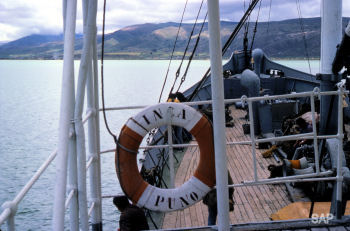 | 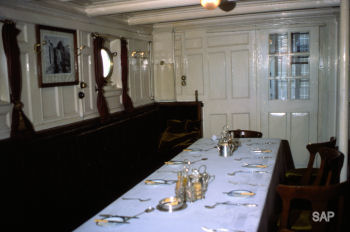 |
| Crossing the small lake in Bolivia 1977 | The dining saloon 1977 |
| SS Ollanta launched 18th November 1931 | |
| |
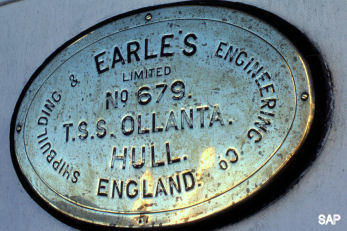 | 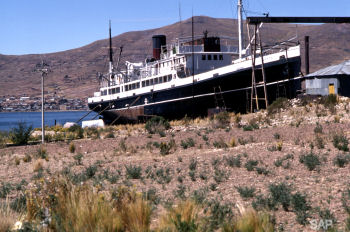 |
| The Brass name / registration plate | The
Ollanta on Huajé slipway , Puno 1979 |
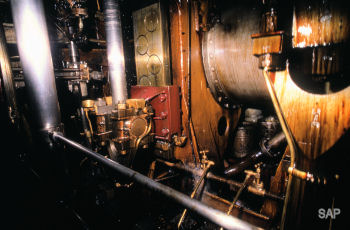 | 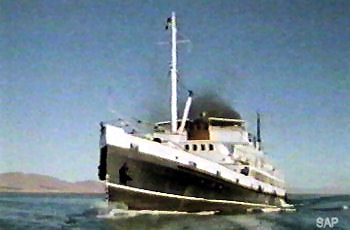 |
| The oil fired steam engine -SS Ollanta 1980 | SS
Ollanta In the Bolivian small lake |
 | |
| From a timetable of the 1960s | |
And where are they now? The Inca was broken up and sold for scrap. The Coya was beached for many years on the shore of Puno Bay and is now a restaurant. The Ollanta has been idle in Puno harbour since the 1990s and awaits some loving care. The Yapura was renamed BAP Puno in the 1970s and has been used around the Peruvian part of the lake as a hospital ship to the present time [2011] BAP = Buque Armado Peruano Puno, a Peruvian Navy Ship Puno]. So the Yavari and Yapura are the sole working survivors in their near original form of this small and extraordinary fleet of British built steamers. Since December 2011, the Yavari has been in the care of an embryonic National Trust of Peru, at present [March 2012[ known as La Asociación Yavari. | |
| MORE — AN AWARD FOR THE YAVARI | |
Some early printed references Brian Fawcett Railways of the Andes, George Allen and Unwin Ltd, 1963 Sea Breezes, H.Dowins, Sail and Power on Lake Titicaca, April 1968, Peruvian Times, Steamships continue a century-old service on Titicaca, Peter Frost, April 6th 1973 And on the web University
of Hull, Maritime Historical Studies Centre - Earles' Yard and the Steamships
in the clouds, the Inca and Ollanta | |
| | |||
| The
text and most of the images are © Copyright | |||
| For
any commercial use please contact | |||
| | |||
|